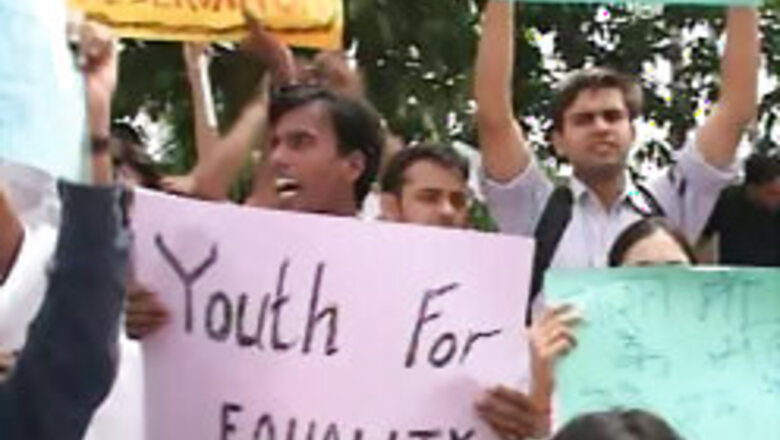
views
New Delhi: Pilgrims, astronomers and students across India watched the partial solar eclipse on Wednesday. For some the event had religious significance, while for others it was a rare celestial event.
The eclipse began in Brazil at sunrise and then spread to the Atlantic, Libya, Egypt, Central Asia and ended at sunset in Mongolia.
In India the eclipse lasted for 43 minutes in the evening and was visible in some parts of India. At 40 per cent eclipse, Amritsar got the best view and the event here last from 4.25 pm to 5.18 pm.
In Kurukshetra, lakhs of pilgrims took a dip in the sacred Brahamasarobar and Sannihit sarovars.
In Kolkata, hundreds of school children and amateur astronomers gathered at observation centres across the city.
“The eclipse lasted in Kolkata from 5.02 pm to 5.45 pm. Cities in north west India had a better view, as they were closer to the path of totality," said Dr Debiprosad Duari, director of research and academics at the city planetarium.
“India will witness a partial lunar eclipse on September 7 this year and a partial solar eclipse on 19 March 2007,” said Duari. A total solar ecplise will pass through India on 22 July 2009.
In Turkey, an 80-member team of Indian students and astronomers watched the eclipse from the beach resort town of Antalya.
"The eclipse was just for three minutes, but people had flown in from all over Turkey to see the eclipse," said Sachin Bhamba, general secretary of Science Popularisation Association of Communicators and Educators.
"Wow, this is wonderful," said Sanjana, a Class VIII student from New Delhi, who won a trip to Turkey to watch the event.
"This is the fifteenth total solar eclipse I observed," said James Dire, professor of astronomy at the Gardner Webb University, North Carolina, US, who led a six-member team to watch the eclipse.
















Comments
0 comment